Pantanal – A paradise for animal lovers
24.04.2019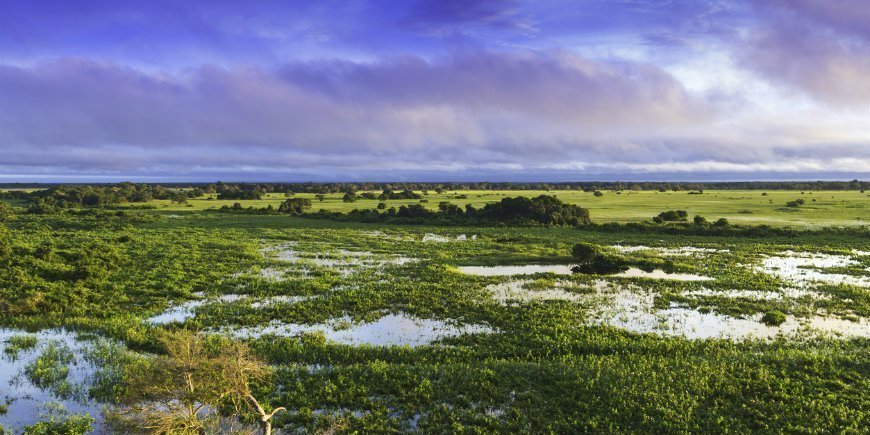
Pantanal in Brazil is home to wholly unique animal species and sets you up for an unparalleled adventure.
Here you will join safaris on both land and the water, where you can see animals from front row.
Travel with us to Pantanal – you’ve never seen anything like it!
What is Pantanal?
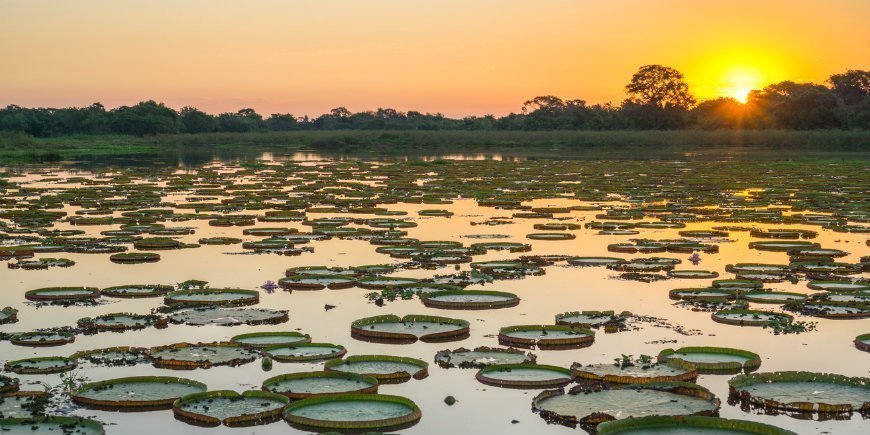
With over 200,000 km2 Pantanal, located in southern Brazil, is considered the world’s biggest freshwater wetlands.
Wetlands are areas that, for shorter or longer periods, are inundated with water or underwater entirely. In addition, you can typically find many bigger and smaller rivers and lakes, which is exactly the case in Pantanal.
In Pantanal’s wet season, between November and March, the rivers and lakes flood and together form an infinite number of rivers, lakes, swamps, marshes, and as a result, small lush islands.
During the dry period in Pantanal, from April to October, the water in many places recedes back to the river banks. However, the lower sections of Pantanal continue to be very wet even in the dry period.
Due to its unique landscape, immense animal life and eco-system, Pantanal is on UNESCO’s World Natural Heritage List.
Pantanal’s impressive animal life
One of the biggest reasons to visit Pantanal is the area’s fascinating animal life.
The open landscapes in Pantanal provide fantastic opportunities to spot a wealth of different animal species
Below you can read about 7 of the truly unique animals you can see on your tour:
Hyacinth macaw
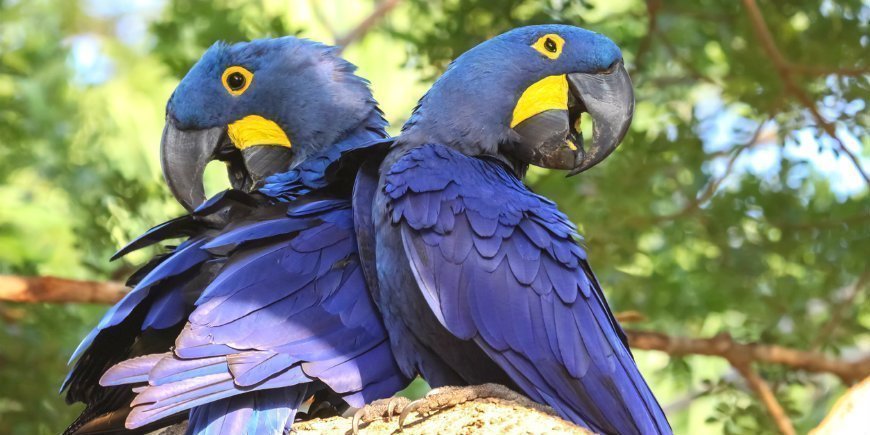
Pantanal is home to no less than 600 different bird species, but the most iconic is without a doubt the hyacinth macaw – a blue parrot with yellow markings by its eyes and beak.
The hyacinth macaw is the largest parrot species in the world. It can measure up to 100 cm from the top of its head to the tip of its tail, and can have a wing span of over 120 cm. It’s fairly rare, too. However, Pantanal is one of the places it lives in the wild, and your chances of seeing this beautiful bird are pretty good.
Capybara
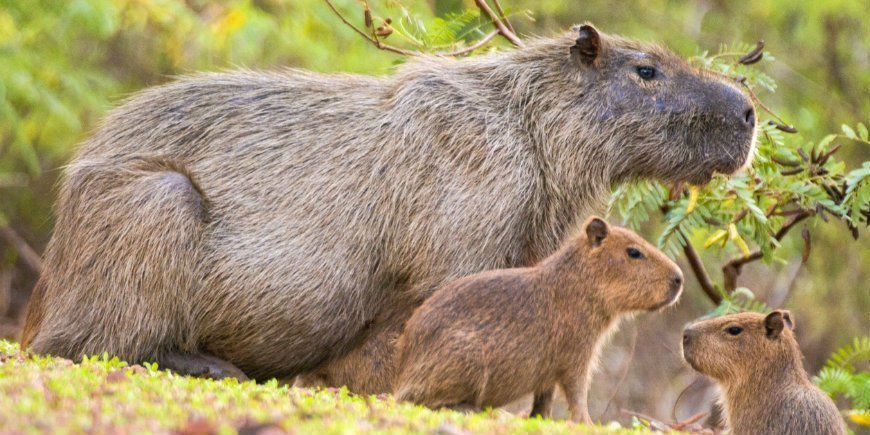
The capybara is the world’s biggest rodent and is related to the guinea pig, which is a pet.
This rodent is particularly recognisable with its almost square snout, and it really does look like an overgrown guinea pig to boot! Capybaras are good swimmers, which is practically a necessity for living in Pantanal. They can hold their breath under water for up to 5 minutes at a time.
Capybaras primarily feed on grass and aquatic vegetation, making the wetlands a perfect home.
Caiman
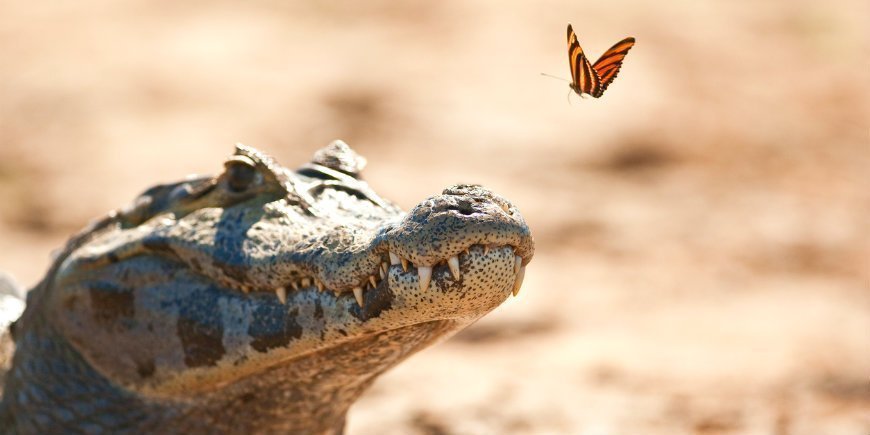
Yacare caimans, which live in Pantanal, are related to large alligators. That said, the caimans are smaller than the alligators. Males can grow up to 2.5 metres, while females only reach 1.5 metres.
Caimans mostly feed on piranhas, but they also eat insects, snakes, and in some cases, capybaras.
Back in 1992, the yacare caiman was an endangered species, as its scaly skin was a prized possession. However, since a ban on hunting the animals was issued, the caiman population has now risen to new heights.
Tapir
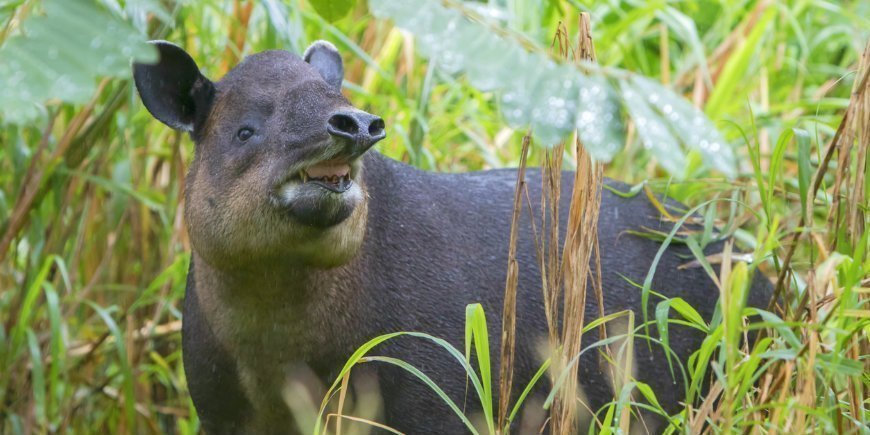
The tapir is a unique mammal, resembling a cross between a pig and an anteater (the anteater can also be seen in Pantanal).
Tapirs can reach a fighting weight of up to 300 kg. Their snouts are flexible and good for rooting through the forest floor in search of the fruit it lives off of. Their babies are born with clear markings in the form of stripes and spots, which disappear when they are only a few months old.
Tapirs are largely nocturnal animals, but they wake up late in the afternoon to go to the watering holes.
Piranha
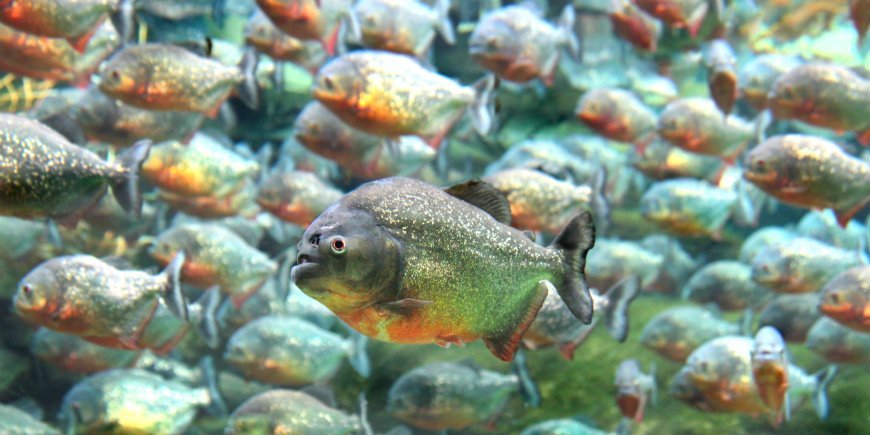
There is a great chance to see the infamous carnivorous piranhas on your tour to Pantanal.
The wetlands are home to three different species of this fish, whose shared characteristic is their incredibly sharp teeth.
On a fishing trip, you can try to catch one of these gluttonous fish, who live in the rivers of Pantanal.
An adult piranha can grow to be between 25 and 33 cm, and many of them have gold-coloured bodies. Although the fish is best known for being a carnivore, they actually also feed on various plants.
Otter
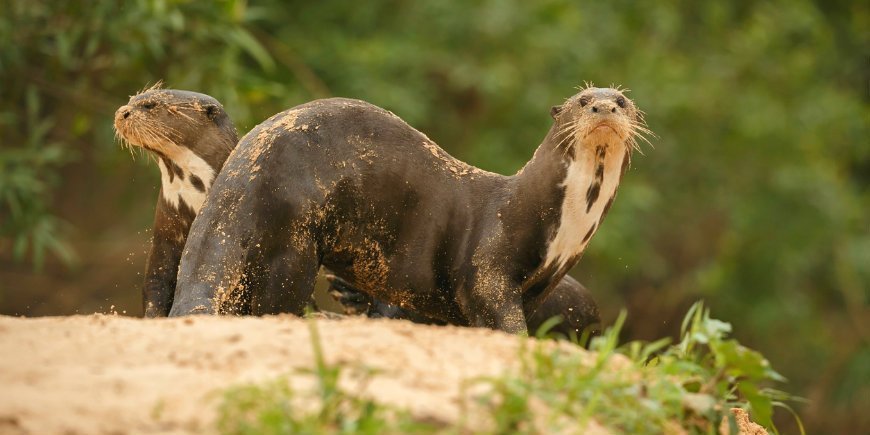
The Pantanal wetlands are home to the Brazilian giant otter, which can grow to be nearly 2 metres long.
The rivers are full of fish, which the otters live off of, and they build their dens on the river banks.
Although the otters can be a little shy, you may still be lucky enough to spot them on a boat trip or from a safari Jeep near the rivers. This is particularly possible as the otters are quite active during the day. Today, unfortunately, the giant otters are endangered, as they were hunted for their fur for many years.
Ocelot
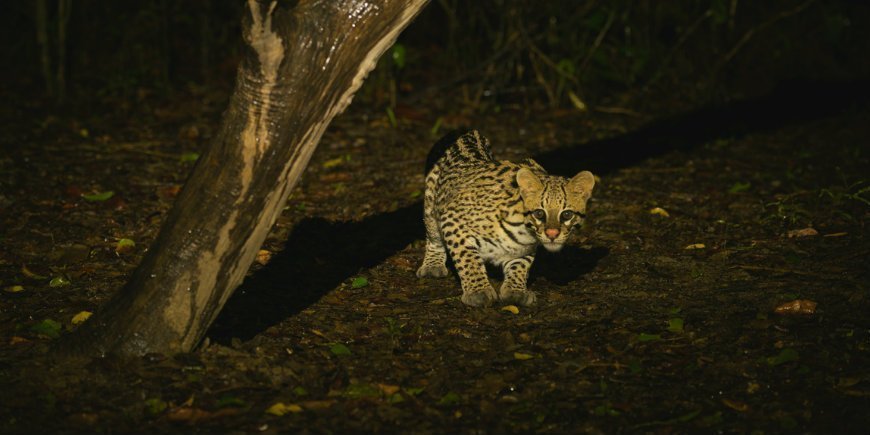
While you may be lucky enough to spot the majestic jaguar in northern Pantanal, it is further to the south that you can see the ocelot – another spotted feline.
The ocelot is smaller than the jaguar, but your odds of seeing it are higher as well.
You have the biggest chance of seeing this cat on an evening or night safari, as the ocelot hunts at night. Along with your guide, you keep your eyes out for the reflective yellowish cat eyes in Pantanal’s wetlands – unlike many cats, the ocelot is not at all afraid of water.
3 wet facts about Pantanal
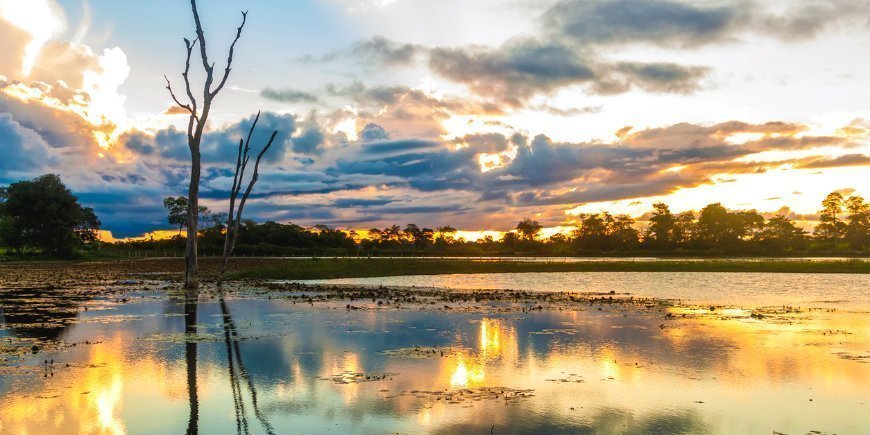
Beyond Pantanal’s unique animal life, the area also has interesting, incredible and wet facts:
1: In Brazil, you can find Pantanal in the southern end of the country, but the wetlands area actually stretches across 3 countries – Brazil, Bolivia and Paraguay – and makes up about 3% of the world’s wetland area.
2: The name “Pantanal” is Portuguese and means “swamp” – quite a fitting name for the wetlands area!
3: In the wet season, 78% of the Pantanal is covered in water. This means that whole stretches of roads are shut down, as you simply cannot drive on them due to the vast amounts of water.
A tour to Pantanal’s authentic and wholly unique nature is something you will not soon forget.
Pack your suitcase for a world-class adventure.
TourCompass
